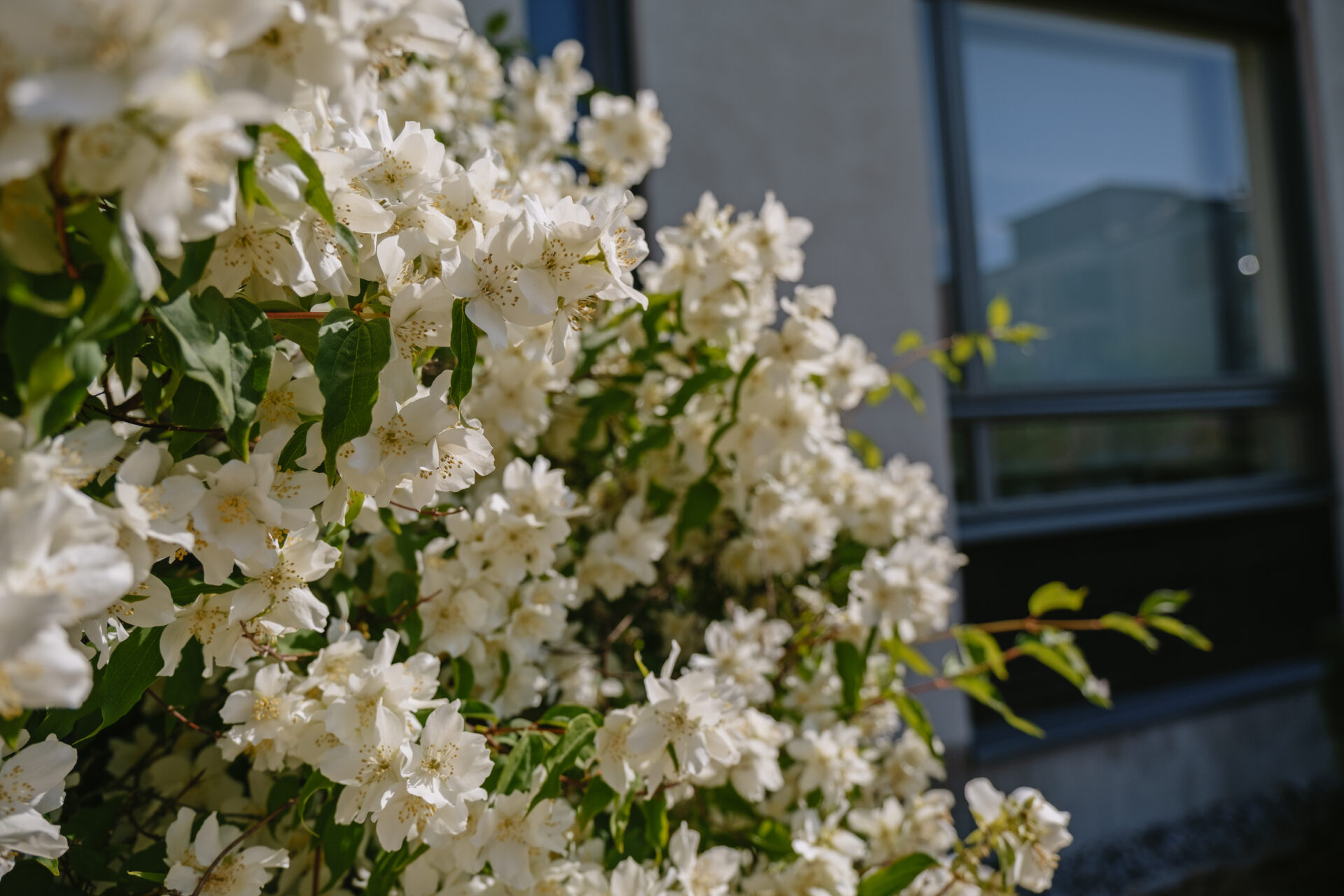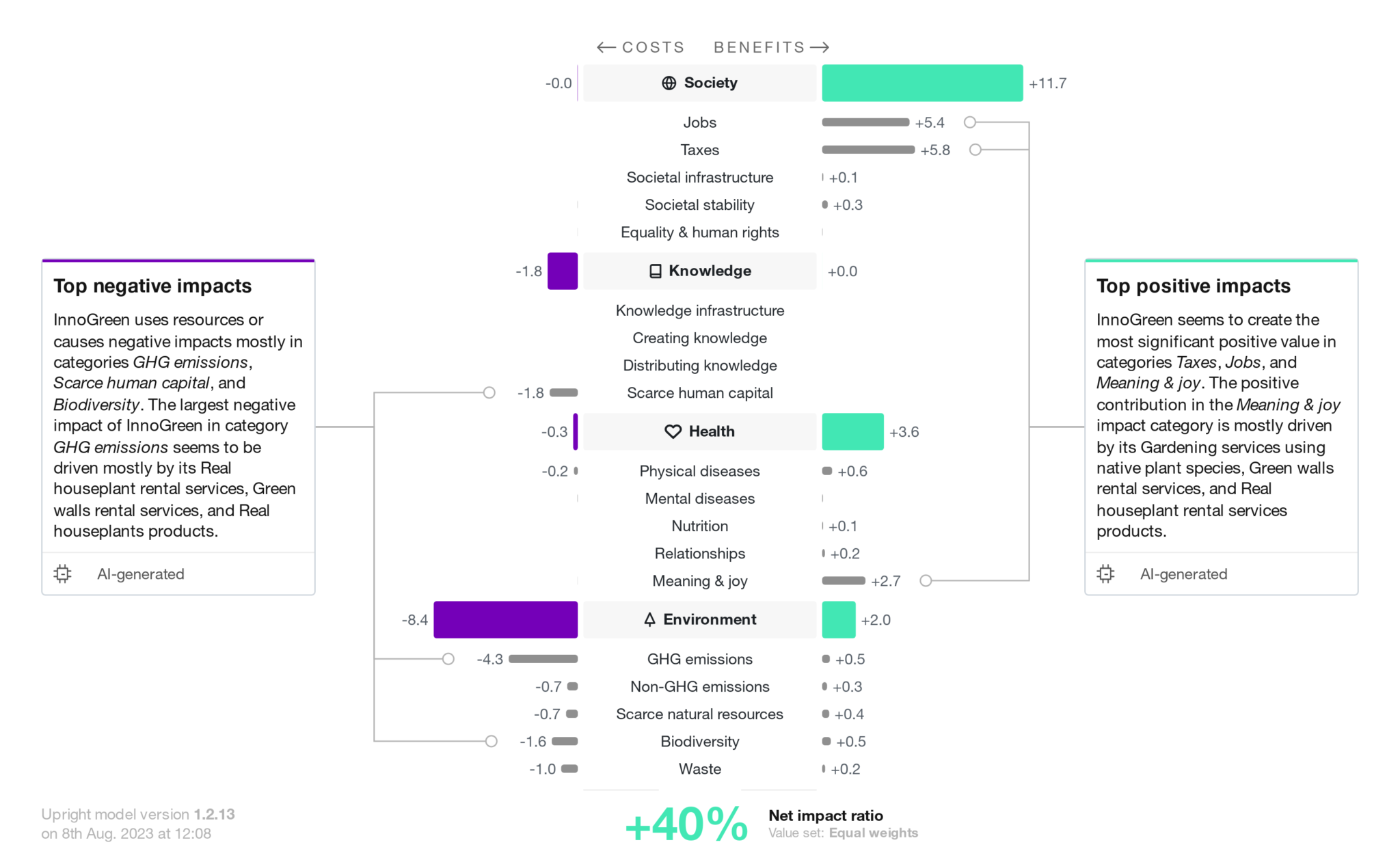Our website uses cookies. We analyze usage statistics collected based on them and they may be used for targeting advertising on other websites.
You can also reject the tracking and use of cookies. More information

InnoGreen is a net positive company! But what does that actually mean, and is it enough?
InnoGreen’s net impact ratio is +40%. This means that the positive effects of our operations outweigh the amount of resources we use. InnoGreen’s most significant positive impacts are directed towards society, health, and the environment.
We measure and evaluate the sustainability of our business using the Upright Project’s net impact methodology. Upright’s method is based on machine learning, open-source science, as well as the products and services produced and offered by companies. It assesses the impacts of products and services on the environment, health, society, and knowledge. The net impact profile helps us understand the efficient use of resources and value creation of the company.
View our complete Upright report here!

Society
Knowledge
Health
Environment
Waste
Although as a whole we are well on the positive side, this is not enough for us. We constantly aim to make our operations even more sustainable and be pioneers for a more sustainable green industry. To improve, we must take a look in the mirror and reflect on our actions.
Our greatest sustainability challenges relate to green plants. Growing, transporting, and maintaining plants require specific conditions, such as temperature and light. Living plants also need water. Additionally, factors like growing medium, fertilizer, and pot type, all influence where, how, and from what ingredients these are made. On the other hand, well-maintained living plants bring joy for decades, sequester carbon, and are biodegradable.
Therefore, reducing plants is not the answer; instead, we need to find better ways to bring nature into the urban environments.
Currently, for instance…